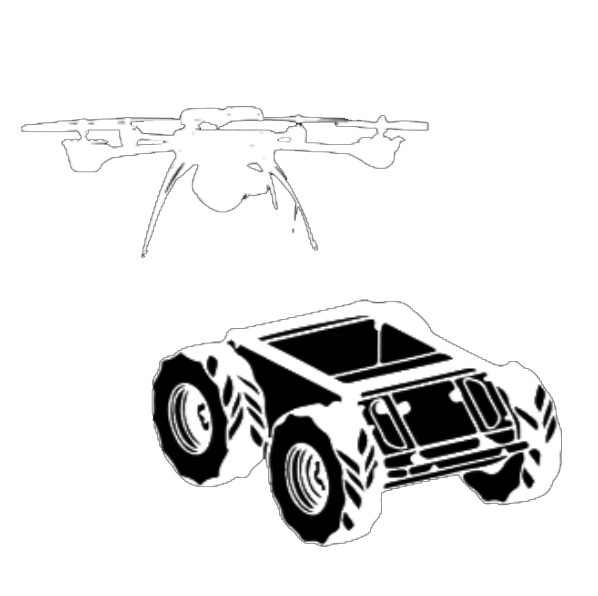1. System-level Mandatory Performance Requirements
| ID | Requirement | Description |
| M.P.1 | The system will generate temperature model for an area within the dimension of 20m×20m×5m. | A demo covering nontrivial scale is expected. |
| M.P.2 | The accuracy of the temperature distribution model will be greater than 80%. | The temperature distribution model is expected to be close to ground truth temperature distribution. |
| M.P.3 | Each selected interest point will reduce local uncertainty by at least 3%. | The selected interesting point is expected to be efficient and meaningful for model update. |
| M.P.4 | The system will collect temperature sample with an absolute error no larger than 2°C. | The temperature sensors are expected to provide accurate measurements for distribution modeling. |
| M.P.5 | The system will update the model after receiving each sample. | The system is expected to conduct efficient model updating. |
| M.P.6 | Both UAV and UGV will reach and take temperature samples at the assigned locations with success rate greater than 80%. | Many influences including navigation error, control error etc. could cause sampling task to fail. Both UAV and UGV are expected a nontrivial chance to finish the sampling task. |
| M.P.7 | Both UAV and UGV will achieve localization accuracy greater than 2m. | The UAV and UGV are expected to take measures close to the desired location. |
| M.P.8 | Both UAV and UGV will plan obstacle-free trajectory through randomly-deployed obstacles. The quantities and dimensions of obstacles are listed in Table.12. | The UAV and UGV are expected to avoid reasonably sized pieces of obstacles without human maneuver. |
| M.P.9 | The system will last at least 15 minutes for each deployment. | The system is expected to avoid frequent recharging. |
2. System-level Mandatory Non-Functional Requirements
| ID | Requirement | Description |
| M.N.1 | Both UAV and UGV will have no sharp edges. | Safety consideration 1. |
| M.N.2 | UAV has drone blade guards. | Safety consideration 2. |
| M.N.3 | Both UAV and UGV will have emergency stop mechanism. | Safety consideration 3. |
| M.N.4 | Both UAV and UGV will maintain a low noise level. | Environmental consideration 1. |
| M.N.5 | Both UAV and UGV will cause no damage to the operating environment. | Environmental consideration 2. |
| M.N.6 | The system will be able to scale up to multiple heterogeneous robots. | Extensibility consideration for deployment in various environments. |
| M.N.7 | The system will cost no more than 5000 dollars. | The sponsor can provide no more than 5000 dollars. |
3. System-level Desirable Performance Requirements
| ID | Requirement | Description |
| D.P.1 | The system will generate temperature model for an area with the dimension of 20m×20m×5m within 20 minutes. | The system is expected to operate efficiently, while there is no guarantee on the complexity of the environment. |
| D.P.2 | The UGV will travel at an average speed of 3 mph. | The UGV is expected to move efficiently, while complex terrain could slow down its movement. |
| D.P.3 | The UAV will travel at an average speed of 8 mph. | The UAV is expected to move efficiently, while weather condition could slow down its movement. |
| D.P.4 | The UGV and UAV will have less than 2m×2m×1m overlapping in sampling coverage. | The UAV and UGV collaborative sampling is expected to have few overlapping, why it could be constrained by terrain’s geometry. |
4. System-level Desirable Non-functional Requirements
| ID | Requirement | Description |
| D.N.1 | The system will operate efficiently in different kinds of weather. | The system will operate robustly under different conditions for real scientific use. |
| D.N.2 | The system will provide a user-friendly interface for interest area selection. | Users without coding experience will be able to operate the system easily. |
| D.N.3 | The combined weight of UAV and UGV should be no more than 50kg. | The system will not be too heavy to be portable. |
